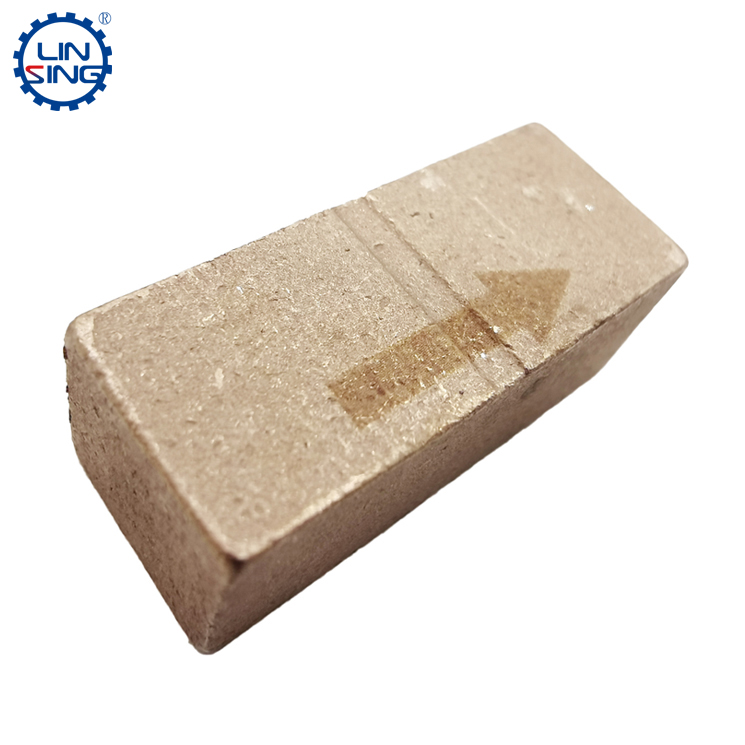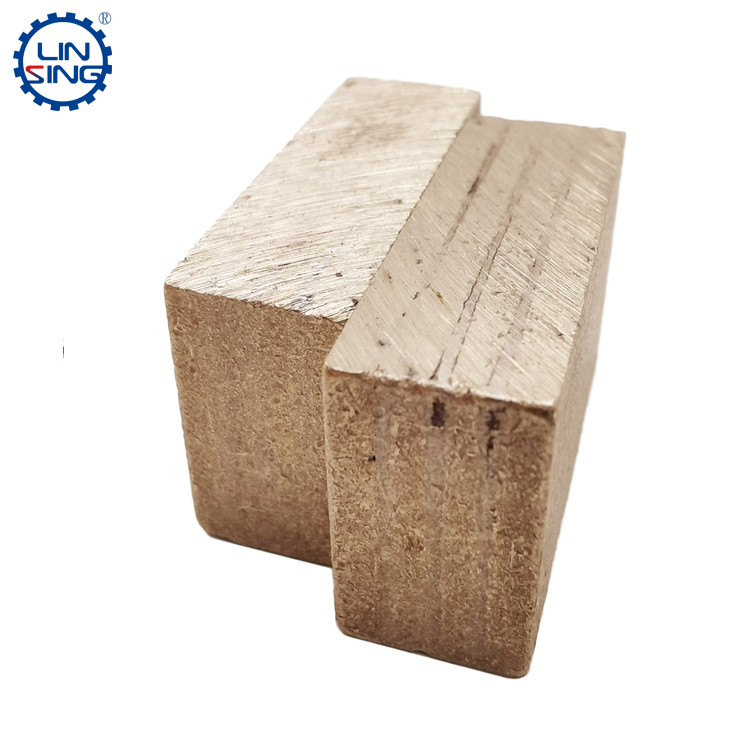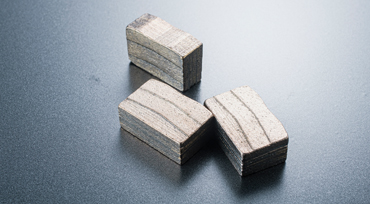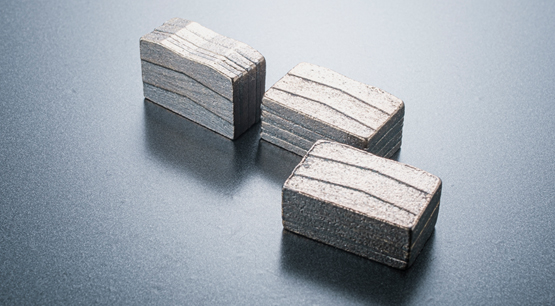In the process of manufacturing diamond segments, most of the factories currently use cold pressing and hot pressing. These two processes allow the segment to quickly shape. At present, most of the cold pressing processes in the factory use cold presses (stamping and hydraulic presses). There are two types, but there will be more hydraulic machines, mainly because hydraulic machines produce less vibration and cause less damage to the machine); hot pressing uses hot pressing sintering machines, sintering furnaces, and hot pressing sintering. There are many applications of machines, especially currently most manufacturers have begun to use vacuum hot pressing sintering equipment to further slow down the oxidation reaction that occurs during the sintering process.
Starting with cold pressing, the cold pressing process steps when manufacturing diamond segments are as follows:
First calculate the working layer material and the transition layer material, and weigh the working layer material and the transition layer material. Then operate according to the following levels: mold inspection → apply release agent on the surface contacting the molding material → mold assembly → cast transition layer material → scrape down → lightly press with the indenter → lower the working layer material → install the indenter → send Enter the press to press→hold pressure→unload→unload the mold. Arrange the unloaded block blanks neatly in the tray for use.
The cold forming pressure is usually 100~200MPa when manufacturing diamond segments. it is necessary to ensure that the blank have a certain strength, and the height of the blank should be 40%-50% larger than the finished product size.
The following lists the pressure required to calculate the cold forming of the diamond segment:
A. Calculate the pressure-bearing area of the full mold:S=nLb
In the formula: S-full mold bearing area, cm2; n-full mold section number; L-section length, cm; B-section width, cm.
B.Calculate the total pressure and gauge pressure:
Suppose the selected cold forming pressure is 100MPa=1000kg/cm2=10000N/cm2, and the total pressure calculation formula is:Pt=p×S.
In the formula: Pt-total pressure of full mold pressing, N; p-pressure per unit area of cold pressing, N/cm2; S-pressure bearing area of full mold, cm2
After obtaining the total pressure Pt of full mold pressing, a suitable cold press can be selected according to the total pressure. After the press is selected, the gauge pressure during pressing is calculated according to the total pressure and the area of the piston of the press. The gauge pressure calculation formula is: Pb=Pt/Ph. In the formula: Pb-gauge pressure during pressing, N/cm2; Pt- total pressing pressure, N; Sh- piston area of the press, cm2.
Then let’s talk about hot pressing sintering, that is, putting the cold-pressed segment on the hot pressing mold, and then applying high temperature and high pressure to effectively alloy the diamond particles and other metal elements, so that the matrix can hold the diamond particles. To hold it firmly, the bezel setting force needs to be good, and the particles are evenly distributed, so that the effect of the made segment is good. When the pressure of the sintering furnace increases, the abrasion and hardness of the matrix of diamond tools mainly composed of iron powder will be improved. The long-term experiment of Linxing diamond tools proves that after 20 MPa or more, it has little effect on the carcass; when the pressure is 15-20 MPa, the density/alloying effect of the carcass is better, which is beneficial to the edge of the carcass. . When it is lower than 15 MPa, the hardness of the carcass will decrease. Of course, the specific pressure needs to be fine-tuned according to different formulas. For example, the formula with more cobalt powder and manganese powder in the metal carcass requires a higher pressure, while if there are more iron and copper powders in the metal carcass, the pressure is lower. It will be better. In general, the pressure of the more active metal is slightly lower, and the pressure of the inactive metal should be increased appropriately to further reduce the distance between metal atoms and make the sintering process more thorough. Of course, the pressure produced by the entire segment still depends on the actual cutting object, and cannot be generalized.

Pressure calculation of sintered diamond segment
Publish date:2022-07-13 16:17:45 Article From:Linsing Diamond Tools Clicks:










